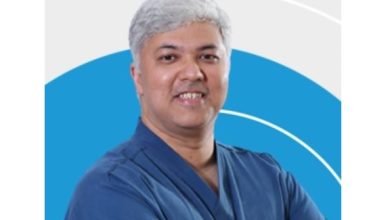
Rajneesh Bhandari, Founder, NeuroEquilibrium gives an insight on how convergence of multiple technologies will exponentially amplify the impact bringing down the costs and improving access to healthcare
“An ounce of prevention is worth a pound of cure” – A large proportion of chronic diseases are preventable, providing an opportunity to exploit prevention as a strategy and reduce disease burden. Wearable smart devices can monitor health parameters like ECG, pulse, oxygen saturation, sleep parameters, gait parameters, etc. The list is endless. Smart wearable devices can monitor one’s health in the real world, at work, at home, or during sleep. These devices help in finding out the medical “Root Cause Analysis.” Thus these devices, enabled by AI-driven actionable insights, can help people manage their health and make more informed decisions, directly reducing long-term healthcare costs. Wearable technology can make healthy living a cult and help reduce chronic and lifestyle diseases. Startups like Curefit, which focuses on better eating and fitness, are targeting 90 million health-conscious individuals in India.
Digital therapeutics (DTx) provide scientifically proven software-driven therapeutic interventions to help people change their habits, prevent or manage the disease and thus reduce their risk of chronic disease. For example, more than 30 per cent of people in the US do not take their medications as recommended, resulting in 125,000 deaths annually. Digital therapeutics, using AI tech, can help improve patient adherence to taking medicines. Handheld smartphone-connected screening devices will dramatically decrease diagnostic costs and increase accessibility. One such example is Butterfly iQ, the world’s first handheld, smartphone-connected, single-probe whole-body ultrasound system, which came into the limelight recently when the device was used to perform ultrasound in space aboard a SpaceX spacecraft. Teleconsults are the new normal and will disrupt hospital OPDs in the future.
As per a recent McKinsey report, telemedicine will replace at least 30 per cent of OPD in India, saving over $5 billion. According to the projections, 50 million households will be doing virtual consults in the next five years, mainly under a subscription model. The top 10 causes of death in India require treatment by a super-specialist doctor. However, there is an acute shortage of super-specialist doctors. For example, we have just 800 endocrinologists for 72 million diabetic patients, while as per the US or European standards, we should have 30000 endocrinologists. Similarly, for 1.3 billion people, we should have 40000 neurologists but have just 4000 neurologists. Technology will have to be a force multiplier to solve problems of accessibility and affordability. Remote diagnostic platforms, enabled by AI, can dramatically reduce the marginal cost of providing super-speciality services.
NeuroEquilibrium is one such super-speciality remote diagnosis platform for vertigo and balance disorders. NeuroEquilibrium provides service in over 125 hospitals across India. Super-specialist doctors, sitting in a central location, assisted by computer vision and machine learning, help in diagnosis, treatment planning, and rehabilitation of these patients, thus reducing cost and increasing access to super-speciality healthcare.
In India, hospital infrastructure is inadequate, with only 1.5 nurses and 0.7 beds per 1000 population. “Home healthcare,” enabled by technology, will save 40 per cent of costs compared to hospitals. More importantly, patients have a faster recovery cycle with the love and care of family and a comfortable environment. It also reduces unnecessary hospital visits by 65 per cent. Technology-driven ‘Home healthcare’ could reach 90 million households by 2025.
For any healthcare provider, the first interaction with patients to understand their symptoms is a massive undertaking. It requires patients to visit the hospital physically and clearly articulate their condition and doctors to diagnose symptoms and provide treatment. The overuse of specialists for initial diagnosis makes healthcare very expensive. Artificial Intelligence (AI) and chatbots can help make the initial diagnosis to direct the patient to the correct specialist.
AI-driven teleradiology can reduce the marginal cost of interpreting an MRI or a CT scan to near zero. For example, technology developed by Zebra Medical Vision can read millions of scans in a day at less than $1000 a day. Possibly in five years, a medical image will be reviewed by a radiologist only after it has been pre-analysed by a machine. Similarly, today artificial intelligence can interpret pathology slides better than pathologists. Computer vision products like PathAI claim a lower error rate than pathologists.
Medicine will advance more in the next ten years than it did in the last 100 years. The convergence of these multiple technologies will exponentially amplify the impact bringing down the costs and improving access. This new era of care will be revolutionary as we move from sick-care to healthcare, from reactive to preventive, from episodic to predictive, and from one-size-fits-all to personalised.




